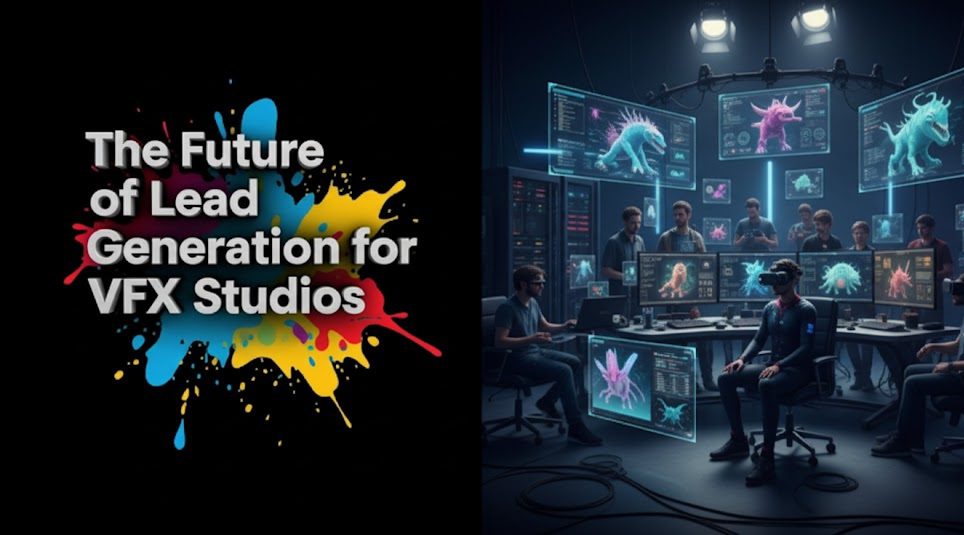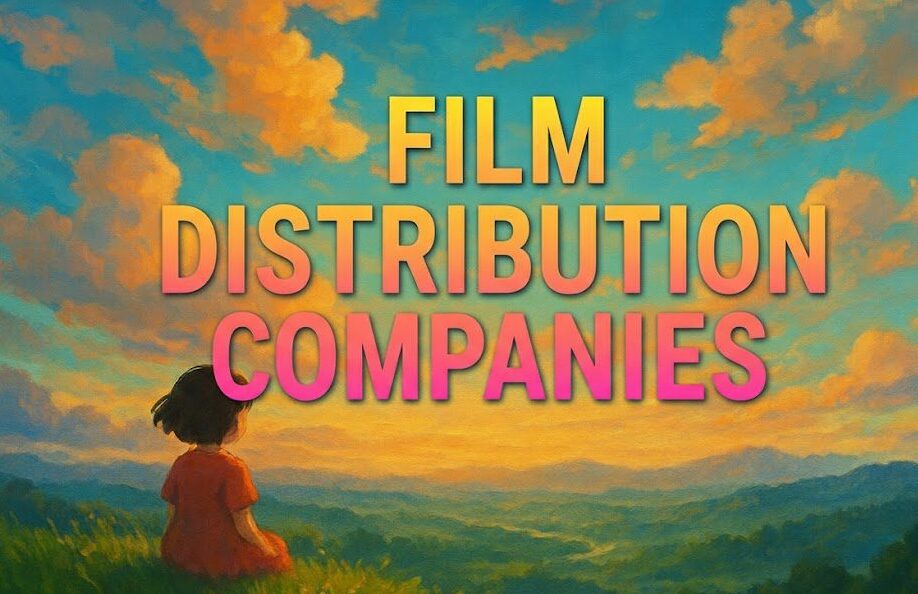Introduction
The magic of cinema often starts with a brilliant idea, a compelling story that deserves to be told on the big screen. However, turning that vision into reality requires more than just creativity; it demands resources. Learning how to raise funds for film is one of the most critical skills for any aspiring or established producer and filmmaker. It’s a journey filled with challenges, but also immense opportunities.
This article will guide you through the diverse landscape of film financing, exploring traditional avenues, modern strategies, and how to prepare your project to attract the investment it needs to shine. We’ll look at everything from private equity to crowdfunding, and even how platforms like Vitrina can help you connect with the right people.
Table of content
Key Takeaways
| Area | Insight |
|---|---|
| Understanding Film Finance | Film funding is diverse, ranging from equity and debt to grants and crowdfunding. Each has its pros and cons. |
| Traditional Funding | Studio financing, private equity, and pre-sales remain significant, often requiring strong ROI projections and established teams. |
| Modern Strategies | Crowdfunding, film grants, and tax incentives offer accessible routes, especially for independent filmmakers. International co-productions can also pool resources. |
| Project Preparation | A compelling pitch deck, a solid business plan, and a strong team are crucial to attract any form of investment. |
| Networking & Platforms | Building connections and leveraging platforms like Vitrina’s solutions can significantly aid in finding investors and partners. |
| Actionable Tip | Start by clearly defining your film’s budget and financial needs before exploring funding options. |
Is Your Film Project Prepared for Investment?

Understanding the Landscape of Film Financing
Diving into the world of film production means you’ll quickly learn that funding is the lifeblood of any project. It’s often the first, and biggest, hurdle a filmmaker faces. But don’t you worry, understanding the lay of the land is the first step to conquering it!
Why is securing funding the first big hurdle?
Securing funds can feel like a mountain to climb because filmmaking is a high-risk, high-reward venture. Investors are looking for projects that not only tell a great story but also have a clear path to profitability or significant impact. The competition is fierce, with many talented creators vying for a limited pool of resources. A well-thought-out financial plan isn’t just a document; it’s your roadmap showing potential backers you mean business.
What are the primary categories of film funding?
Film funding isn’t a one-size-fits-all deal. The main types include equity financing, where investors get a share of ownership and profits; debt financing, which is essentially a loan to be repaid; grants and soft money, often from government bodies or foundations that don’t always require repayment; and crowdfunding, where you raise small amounts from a large number of people, usually online.
How has film financing evolved over the years?
Oh, how times have changed! Decades ago, big studios held most of the cards. While they’re still major players, the scene has diversified a lot. The rise of digital technology, streaming platforms, and global connectivity has opened doors for independent filmmakers. We’re seeing more hybrid models, international co-productions, and direct-to-consumer fundraising efforts like never before. It’s an exciting time to be looking to raise funds for film!
| Funding Type | Pros | Cons |
|---|---|---|
| Equity Financing | Access to larger sums, potential for strategic partnerships. | Dilution of ownership, pressure for high ROI. |
| Debt Financing | Retain full ownership (once repaid). | Repayment obligation regardless of film’s success, interest costs. |
| Grants/Soft Money | Often non-repayable, can add prestige. | Highly competitive, specific eligibility criteria, may come with creative stipulations. |
| Crowdfunding | Proof of concept, direct audience engagement, retain creative control. | Requires significant marketing effort, may not raise full budget, platform fees. |
- Key challenge: Standing out in a crowded market.
- Key challenge: Convincing investors of your project’s viability.
- Key challenge: Navigating complex legal and financial agreements.
- Key challenge: Managing expectations and delivering on promises.
Exploring Traditional Avenues to Raise Funds for Film
When you think about Hollywood and big movies, traditional funding sources often come to mind. These well-established paths have launched countless films, and they are still very much in play. If you’re aiming to raise funds for film through these channels, it’s good to know how they work.
Can studio financing still be a viable option?
Absolutely! Major studios like Disney, Warner Bros., or Universal Pictures, and their independent arms (e.g., Searchlight Pictures, Focus Features), continue to finance and distribute a significant number of films. Getting studio backing usually means they see massive commercial potential in your project. It’s highly competitive, but the payoff can be huge in terms of budget, marketing muscle, and distribution reach.
How do you attract private equity and angel investors?
Private equity firms and angel investors are always on the lookout for promising ventures, and film is no exception. To catch their eye, you need more than just a great script. They’ll want to see a strong, experienced team, a clear business plan, and compelling projections for return on investment (ROI). Networking, attending film markets, and having a polished pitch are key. These investors are often looking for unique projects that studios might overlook, especially in the independent film space.
What role do pre-sales and distribution guarantees play?
This is a savvy way to secure funding! Pre-sales involve selling the distribution rights for your film in specific territories *before* it’s even made. A distribution guarantee is a commitment from a distributor to pay a certain amount for the rights upon delivery of the finished film. These agreements can be used as collateral to secure bank loans, effectively funding your production. It shows there’s already market interest in your film.
| Traditional Player | Typical Focus | What They Look For |
|---|---|---|
| Major Studios | Large budget, commercially viable films with global appeal. | Proven talent (actors, directors), strong IP, franchise potential. |
| Independent Studio Arms | Prestige projects, director-driven films, moderate budgets. | Unique voices, festival potential, critical acclaim. |
| Private Equity Investors | Portfolio of films, slate financing, specific genres. | Strong ROI, experienced producers, sound business plan. |
| Angel Investors | Passion projects, emerging talent, niche films. | Personal connection to story/team, potential for impact, moderate risk. |
- Step 1: Develop a bulletproof script and package (director, key cast).
- Step 2: Create a professional pitch deck and financial projections.
- Step 3: Identify and research potential investors or studios aligned with your genre/budget.
- Step 4: Network strategically at industry events and through professional connections.
- Step 5: Secure a sales agent or entertainment lawyer to help navigate deals.
Innovative Strategies for Modern Film Fundraising
The film world is buzzing with new ways to get movies made! Beyond the big studios and traditional investors, a whole range of innovative strategies has popped up, especially benefiting independent filmmakers. If you’re looking to raise funds for film, these modern approaches can be game-changers.
Is crowdfunding a realistic way to fund your movie?
You bet it is! Platforms like Kickstarter, Indiegogo, and Seed&Spark have revolutionized how filmmakers can connect directly with their audience to fund projects. It’s not just about the money; it’s about building a community around your film from day one. A successful crowdfunding campaign can also act as proof of concept, showing other potential investors that there’s an eager audience waiting for your movie.
Where can you find film grants and foundation support?
There’s a surprising amount of “free money” out there if you know where to look! Many government bodies (at national, state, and local levels), arts councils, and private foundations offer grants specifically for film development, production, and post-production. These are often highly competitive and may come with specific cultural or thematic requirements, but they can provide crucial non-recoupable funding.
How can tax incentives and rebates significantly reduce costs?
This is a big one! Many countries, states, and provinces offer tax credits, rebates, or incentives to attract film productions. These can effectively reduce your production costs by a significant percentage, sometimes up to 30-40% or even more. Researching these schemes where you plan to shoot (or even where you do post-production) can make your budget stretch much further, making your project more attractive to investors too.
What are the benefits of international co-productions for funding?
Two heads (or countries) can be better than one! International co-productions involve partnering with producers in other countries. This can unlock access to funding sources, tax incentives, and distribution networks in multiple territories. It can be complex to set up, requiring treaties and agreements, but it’s a powerful way to pool resources and talent for ambitious projects.
| Strategy | Key Benefit | Platform/Resource Example |
|---|---|---|
| Crowdfunding | Audience building, proof of concept. | Kickstarter, Indiegogo |
| Film Grants | Non-recoupable funding. | Sundance Institute Grants, National Endowment for the Arts |
| Tax Incentives | Significant cost reduction. | State film office websites, international film commissions |
| Co-Productions | Access to multiple funding pools & markets. | Telefilm Canada, Eurimages |
- Tip: For crowdfunding, create a compelling video and offer unique, tiered rewards.
- Tip: Tailor grant applications meticulously to each funder’s mission and criteria.
- Tip: Consult with a production accountant familiar with tax incentives.
- Tip: Attend co-production markets to find international partners.
Unlock Global Funding Opportunities for Your Movie?

Preparing Your Project to Attract Investment
So, you’ve got a fantastic film idea and you know about the different funding avenues. What’s next? It’s time to get your project in tip-top shape to wow potential investors. How you present your film can make all the difference when you aim to raise funds for film.
What makes a film pitch deck irresistible to investors?
Think of your pitch deck as the visual resume for your film. It needs to be concise, compelling, and professional. Key elements include a killer logline, a brief synopsis, details about your core creative team (director, writer, producer), target audience, comparable films (comps), your budget overview, and crucially, your financial projections and recoupment plan. A visually appealing design that captures the tone of your film doesn’t hurt either!
Why is a comprehensive film business plan essential?
While a pitch deck gives a snapshot, a film business plan dives deeper. It’s a more detailed document outlining the commercial viability of your project. This includes market analysis, a distribution strategy, a detailed financial plan (including cash flow projections), risk assessment, and the overall vision for the film as a business venture. It shows investors you’ve done your homework and have a strategy for success.
How important is your creative and production team?
Immensely important! Investors often bet on the team as much as, if not more than, the project itself. A team with a proven track record, relevant experience, and undeniable passion for the project instills confidence. Even if it’s your first feature, showcasing any past successes (like award-winning shorts or strong industry connections) can significantly boost your credibility.
| Document/Aspect | Purpose | Must-Include Elements |
|---|---|---|
| Pitch Deck | Generate initial interest, secure meetings. | Logline, synopsis, team bios, mood board, budget top-sheet, contact info. |
| Business Plan | Demonstrate commercial viability, detailed strategy. | Executive summary, market analysis, distribution plan, full budget, financial projections, risk management. |
| Team Profile | Build investor confidence. | Relevant experience, past successes, clear roles, shared vision. |
- Common mistake to avoid: An unclear or overly long logline. Keep it punchy!
- Common mistake to avoid: Unrealistic budget or financial projections. Be grounded.
- Common mistake to avoid: Not researching your comparable films properly.
- Common mistake to avoid: Typos and grammatical errors in your materials. Proofread everything!
How Vitrina Helps You Connect and Raise Funds for Film
Navigating the complex world of film financing can be daunting, but you don’t have to go it alone. In today’s interconnected industry, platforms that facilitate discovery and connection are invaluable. This is where Vitrina steps in, offering powerful tools for producers and fundraisers looking to raise funds for film by connecting them with a global network of M&E professionals.
Vitrina is a global B2B marketplace for the Media & Entertainment industry, designed to help buyers and sellers of content, services, and more, find and connect with each other. For filmmakers, this means access to a rich database of potential partners who can help bring your project to life.
How can Vitrina help identify potential investors and partners?
Vitrina’s platform allows you to search and discover a wide array of companies, including financiers, distributors, sales agents, and production companies from around the world. By using Vitrina’s detailed filters and search capabilities, you can identify entities that have a track record of supporting projects similar to yours in genre, budget, or scope. This targeted approach saves you time and increases your chances of finding the right match for your film’s funding needs.
Can Vitrina’s project tracker assist in finding funding opportunities?
Yes, indeed! The Vitrina Project Tracker is a fantastic resource. While it helps track projects through various stages, it also provides insights into who is developing, financing, and distributing content. By observing these trends and identifying active players, filmmakers can strategically position their own projects or find companies that are currently looking for new content to invest in or acquire. You can also showcase your project on Vitrina, signaling to the industry that you are seeking finance or partners.
What networking advantages does Vitrina offer filmmakers?
Networking is paramount in the film industry. Vitrina facilitates this by providing a comprehensive directory and enabling direct connections. You can learn about companies, their key executives, and their past projects, giving you the context needed to make informed outreach. It’s like having a global film market at your fingertips, 24/7, helping you to expand your professional network beyond your immediate geographical or industry circle.
| Vitrina Feature | Benefit for Film Fundraising |
|---|---|
| Company Discovery | Find potential investors, co-producers, sales agents, and distributors. |
| Project Tracker | Identify active financiers, understand market trends, showcase your project. |
| Global Network Access | Connect with M&E professionals worldwide. |
| Data-Driven Insights | Make informed decisions based on company activities and project statuses. |
- How to leverage Vitrina: Create a strong profile for yourself and your production company.
- How to leverage Vitrina: Use advanced search to pinpoint companies aligned with your film’s needs.
- How to leverage Vitrina: Keep an eye on the Project Tracker for companies actively investing in your genre.
- How to leverage Vitrina: Prepare your pitch materials before reaching out to contacts found on the platform.
Conclusion
The journey to raise funds for film is undoubtedly one of the most demanding aspects of bringing a cinematic vision to life. From understanding the diverse funding landscape, exploring traditional and modern avenues, to meticulously preparing your project, every step requires diligence, creativity, and resilience. Remember, whether you’re tapping into private equity, launching a crowdfunding campaign, or seeking out that crucial co-production partner, a strong story backed by a solid plan and an unwavering team will always be your greatest assets. The path may be complex, but with the right strategies and tools, like those offered by Vitrina for enhanced connectivity, your dream of making a film can indeed become a funded reality.
Ready to take the next step in your film financing journey? Don’t let your project just be an idea. Discover the partners who can help you make it happen. Sign up for Vitrina today and start connecting with the global M&E industry!
Frequently Asked Questions
It’s often a mix! Many independent filmmakers use a combination of private investors (friends, family, or angel investors), film grants, and increasingly, crowdfunding. Some also successfully secure pre-sales or find equity partners through networking and film markets.
This varies wildly! A short film could be made for a few hundred dollars or tens of thousands. Feature films can range from under $100,000 (micro-budget) to millions. The key is to create a realistic budget based on your script, creative vision, and available resources before you try to raise funds for film
There are many! These include securities laws (if offering equity), investment agreements, intellectual property rights, chain of title, and contracts with cast, crew, and distributors. It’s highly recommended to consult with an experienced entertainment lawyer early in the fundraising process to ensure you’re compliant and your interests are protected.






































